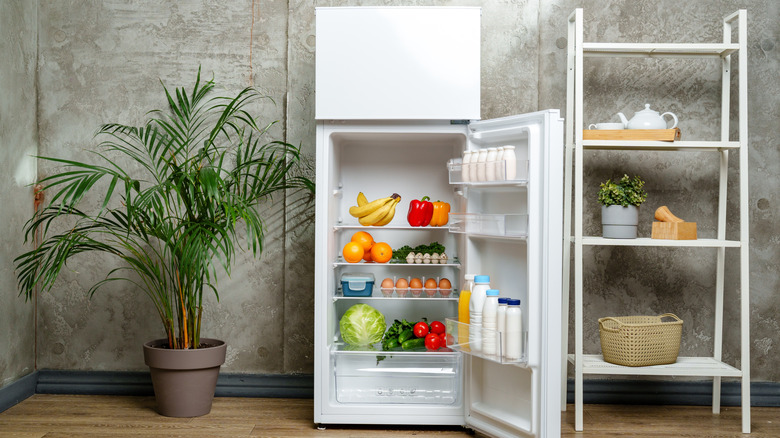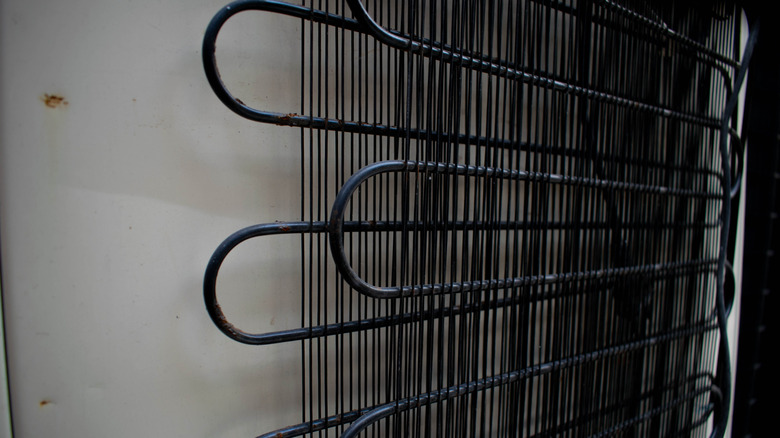The Overlooked Spot On Your Fridge You Didn't Realize Needs Cleaning
You've wiped down the shelves, thrown out some old sauces that were dangerously close to expiring, and maybe even gotten rid of that ancient jar of pickles in the back corner. But have you thought about the dirty little secret hiding beneath (or maybe behind) your refrigerator? When it comes to important fridge areas you might be forgetting to clean, this one isn't so obvious.
According to Whirlpool kitchen brand manager Bree Lemmen, speaking exclusively with Mashed, "One overlooked spot people should clean around the fridge ... is underneath it. Cleaning the condenser coils once a year (located either underneath the refrigerator or in the back) can help regulate the fridge's temperature and help prevent food from freezing in the fridge." Yes, there's likely a whole world of dust mites and icky stuff down there, and it's not something you want to ignore.
While there are some mistakes everyone makes with their refrigerator, forgetting to keep it clean shouldn't be one of them. Who wants to open their fridge and see splatters of mystery liquid everywhere or smell questionable aromas? But sweeping under the fridge might not be on your usual cleaning checklist — out of sight, out of mind, right? However, dust and grime can build up on those coils, and your fridge then has to work harder to keep your ice cream frozen and your lettuce crisp. So, take Lemmen's expert advice and add a yearly coil cleaning to your fridge to-do list.
How to clean your fridge coils
Backing up Bree Lemmen's advice, an EPA study found that dusty refrigerator coils can use up to 35% more energy (via Permatron), which is bad for both your electric bill and your groceries. But before you go poking around under there with wild abandon, there's a way to do it that won't turn the whole project into an unexpected disaster.
For most fridges, it's as simple as unplugging it, pulling it away from the wall (hello, lost cat toys), and vacuuming away the dust that's been accumulating there for far too long. As Lemmen suggests to Mashed, "Use a vacuum and a long, soft-bristled brush to gently sweep the refrigerator to clean the condenser coils." That said, she also explains that some refrigerators require coil cleaning by a professional, so be sure to check your fridge's manual for specific care instructions.
Keeping your coils clean not only saves energy but also keeps your fridge's temperature steady, preventing it from turning into a glorified freezer (the ideal temperature for your fridge, according to the USDA, is 40 degrees Fahrenheit or lower). So, maintaining those fridge coils means less chance of a late-night snack run being spoiled by frozen-solid yogurt.

